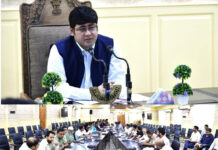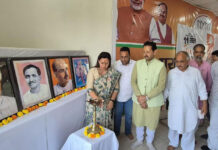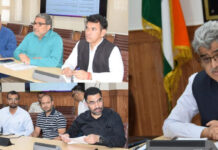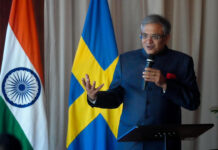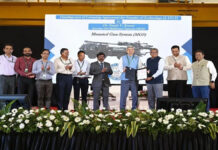Arun Maira
THE health of the earth, with its forests, rivers, oceans and air, is in crisis. Runaway climate change will alter life as we know it within this century. At COP28 in Dubai, world leaders are trying to agree on how to stop it. With World Soil Day observed on December 5, something even more earthy is on my mind: the health of the soil which nourishes life. Seeds planted in toxic soil will not grow. The ideology of growth-driving economic policies has harmed the natural environment that sustains us. This ideology, hard to change, is preventing necessary climate solutions and also retarding progress to achieve the Sustainable Development Goals (SDGs), which include other societal challenges along with climate change. Corporate performance is focused on returns for investors. It does not account for the impact of business on society and nature.
How does nature maintain the health of its soil? Perhaps lessons from nature could guide us on how to change the established paradigm of institutions and ideas that is driving economic growth. I begin with a teaser about air pollution and stubble burning, which the “sons of the soil”, our farmers in Punjab who grow food to feed us, are being made the villains for.
Punjab’s farmers were given mass production technology and inputs to increase production of wheat and rice to feed the nation — monoculture agriculture with imported seeds and fertilisers and water from dams, canals and underground wells. When the water table began to fall alarmingly, seed-planting timings were regulated to coincide with the monsoon rain. Time to remove the stubble of crops after harvest was reduced. Farmers resorted to burning stubble rather than leaving it in the soil or using it around the farm. The recycling of natural waste was disrupted. Now, farmers need new technologies to remove the stubble and use it for other purposes. They do not have the financial resources for this. Meanwhile, their soil has also become toxic with chemicals. A natural forest and a farm have diverse species of plants, birds and insects that provide for each other. This keeps their system healthy. All rely on nature’s complexity for sustenance. Humans remove whichever species they consider to be weeds (because they have not yet found any economic use for them) with mono-cultural methods to scale up economic outputs. Modern, ‘scientific’ farming and forestry have sapped nature’s ability to support our lives and sustain itself too. Modern, scientific, economic progress is good. It has increased the span of human lives. In many countries, the number of older persons already exceeds the count of younger people. Their governments are trying to induce women to have more babies so that economic growth can be maintained. Even in India, there will be more older persons than children within a few years and we must be prepared for an older India. Older persons are not considered productive resources for the economy. Neither are women and other caregivers in families and communities. Economists want more women to be inducted as producers in economic enterprises so that the GDP is boosted. And families and older persons are neglected. To meet increasing needs for care, new solutions, often for profit, are being found. They increase the GDP further, while breaking up natural organisations of families and communities, which sustain our lives.
The governments, which must care for the sustainability of a complex social and environmental system, are like farmers, instinctually responsible for diversity for sustainability of livelihoods. And, like the farmers in Punjab who are short of resources for recycling the stubble, governments are short of resources to care for the elderly. Older persons separated from their families must be provided with care homes, which many cannot afford. Increased pensions to keep up with inflation require governments to hike taxes on companies and working people, which they are unwilling to pay. Efforts to push older persons back into the workforce are resisted by younger persons, who need good jobs with adequate incomes. The number of such jobs is reducing with changing patterns of ‘flexible’ employment in which workers are used and discarded to meet employers’ needs for profit.
Women, older persons and societal caregivers are valuable resources for society. They provide services for the health and sustainability of society that the modern economy is not designed for. However, caregiving services are undervalued in monetary terms (and perhaps should never be valued monetarily). These invaluable societal services do not add up in the financial valuations of economic enterprises. During the G20 summit, Prime Minister Modi appealed to global leaders to find a new model of human-centric growth that is not driven by GDP. Paradigms are hard to change. His appeal notwithstanding, India’s policymakers continue to measure and celebrate the growth of India’s GDP as the supreme barometer of the nation’s progress. India, the world’s fastest-growing major economy, is also generating the least number of good jobs per unit of GDP growth. It has the most polluted cities and alarming levels of water depletion compared even to other developing countries. The fundamental conceptual flaw in the use of GDP as the measure of any country’s (or global) health is that it considers only what economists think matters — money-measured economic activities and outputs.
GDP does not measure all that matters to human beings. Corporate performance is focused on returns for investors. It also does not account for the impact of business on society and nature.
The interconnected societal, environmental and economic problems, listed in the SDGs — and the challenge posed by an ageing population — require a new way of thinking about economics and public policy. New solutions for financing the deceleration of climate change are being planted in the same ideological soil of financial institutions and corporate interests. Many solutions are founded on the same ideology, whereas transformational solutions are snuffed out by this toxic soil.
Transformational solutions cannot be developed in the same soil of high-level conferences and the same experts. They must be found elsewhere: in deliberations among common people — farmers, caregivers, workers and women — who are not yet in the economic hierarchy and who have not yet been co-opted into the establishment’s paradigm. Powerful people must come off their pedestal and listen to them.

